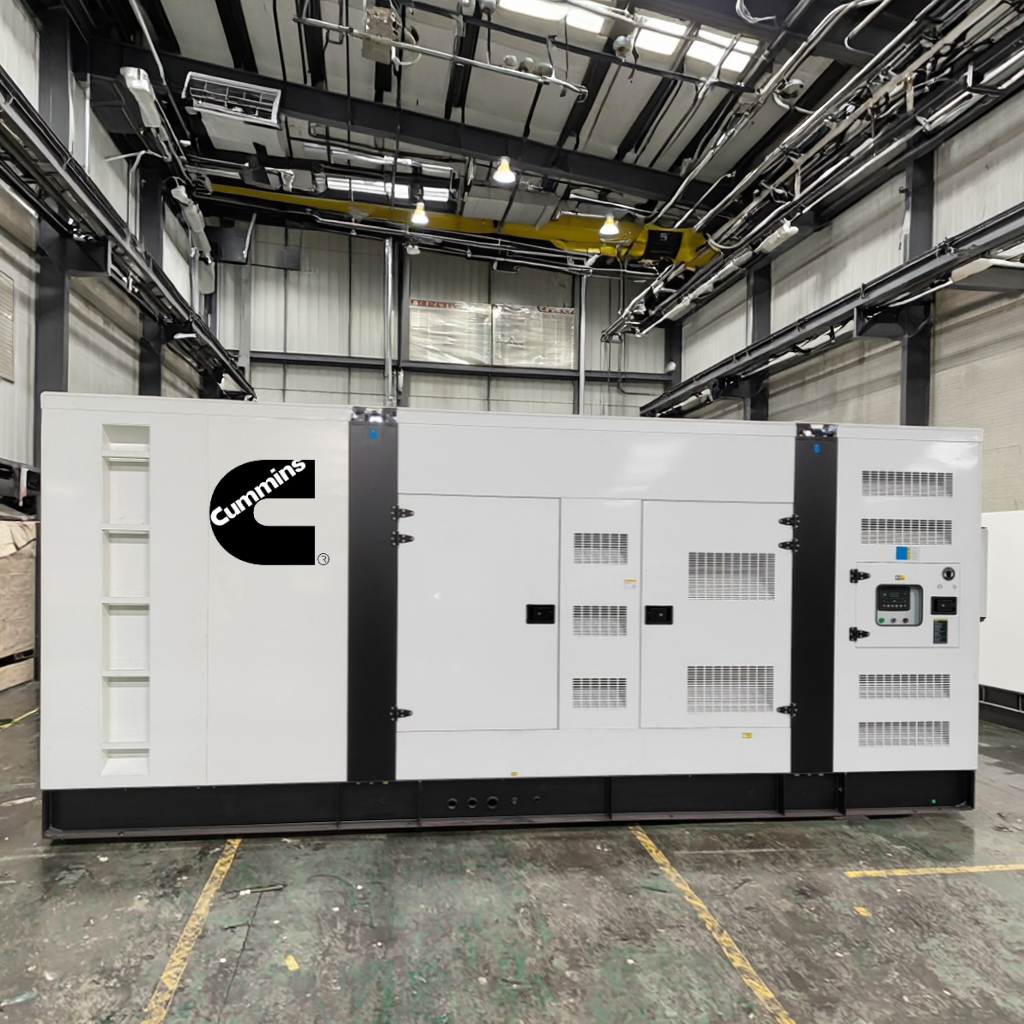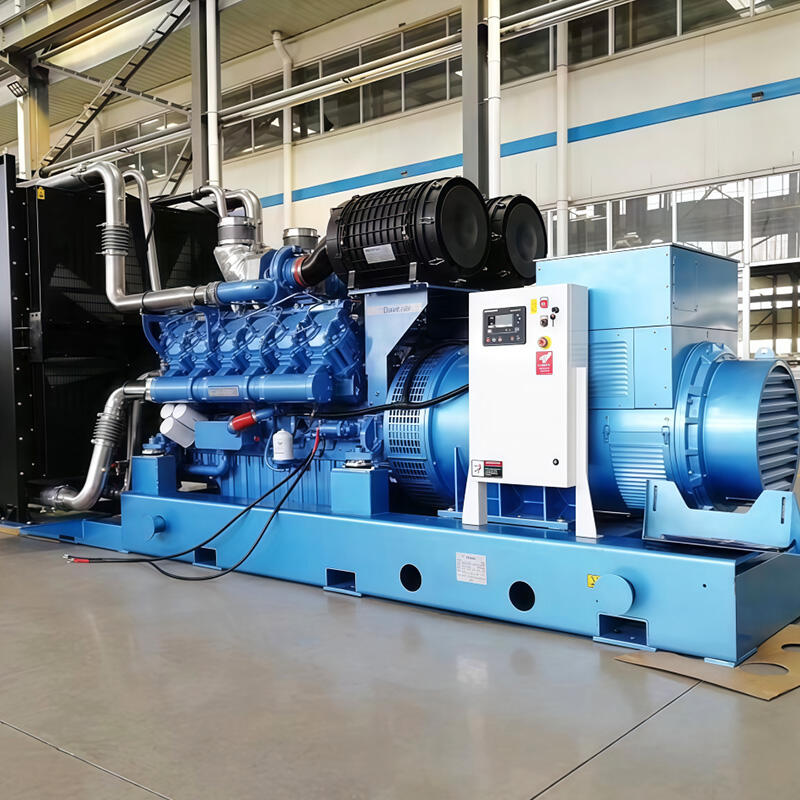Superior Thermal Management and Cooling Efficiency
Heat Build-Up Challenges in High-Power Generators
Power generators rated at high outputs deal with serious heat problems, especially since air cooling can't really handle much past 40% of their maximum load. Research published last year showed something pretty alarming too. When these big combustion engines push past 10 megawatts and run hotter than 140 degrees Celsius, parts inside start breaking down about three times quicker than normal. That's not just theoretical either we're talking about turbine blades warping, insulation melting, all sorts of expensive damage. No wonder most modern power plants now rely on liquid cooling systems if they want to keep running nonstop without constant breakdowns.
How Water Enables Efficient Heat Dissipation in Water Cooled Diesel Generators
Diesel generators that use water cooling take advantage of water's much better ability to conduct heat than air does, which makes them transfer heat about 30% faster. During testing at a 500 megawatt thermoelectric facility, the water cooled units kept their stator temperatures around 85 degrees Celsius give or take 2 degrees when running at maximum load. Meanwhile, the air cooled ones got way hotter, sometimes going over 122 degrees. The difference in temperature control really affects how well these systems perform. Water cooled models managed to maintain nearly 98% of their maximum output power throughout 72 hour stress tests, whereas the air cooled versions only hit about 76%. This kind of stability matters a lot for industrial operations where consistent performance is critical.
Thermal Performance Comparison in a 500 MW Thermoelectric Plant
Field data from a 2024 power station retrofit shows water-cooled diesel generators achieved:
- 18% lower average component temperatures
- 29% reduction in forced cooling system activations
- 41% longer maintenance intervals
The coolant’s phase change properties absorbed 47% of transient thermal spikes that typically degrade air-cooled generator windings.
Optimizing Coolant Flow for Maximum Cooling Efficiency
Coolant pathways that are precision engineered can boost heat exchange performance by around 22 percent in today's water cooled diesel generators. Studies point out that laminar flow designs work best when they hit Reynolds numbers somewhere between 2,300 to 3,800, finding that sweet spot where turbulence helps transfer heat without costing too much extra energy for pumping. Modern coolant systems have gotten pretty smart about this too, adjusting flow rates on the fly to keep temperatures just right across different parts of the engine. Most manufacturers aim for a temperature difference of about 15 to 20 degrees Celsius between what's happening inside the engine and what the cooling system actually sees.
Higher Power Output and Operational Efficiency
Limitations of Air-Cooled Systems Under Sustained Load
Traditional air-cooled generators often struggle to maintain stable temperatures during prolonged operation, with efficiency dropping up to 22% after 8 hours of continuous load (Energy Systems Journal 2023). Their reliance on ambient airflow becomes ineffective in confined spaces or high ambient temperatures, limiting peak power output.
Enhanced Heat Transfer Enables Greater Power Density
Water-cooled diesel generators achieve heat transfer coefficients 5–8— higher than air-cooled systems, enabling 93% operational efficiency in continuous load scenarios. This thermal advantage allows for 25–40% greater power density, critical for applications like microgrids and industrial complexes requiring compact, high-output solutions.
Performance Gains in Backup Power Systems Using Water Cooled Diesel Generators
Hospitals and data centers report 30% faster load response times with water-cooled systems during grid failures. Their stable thermal profiles eliminate derating issues common in air-cooled units, ensuring full 500–2000 kW capacity availability even in 45°C environments.
Matching Generator Capacity with Cooling System Design
Properly sized coolant pumps and heat exchangers boost water-cooled diesel generator efficiency by 12–18%. Advanced designs integrate temperature-modulated flow rates, reducing parasitic energy losses by 9% compared to fixed-flow systems (Thermal Engineering Review 2024).
Reliability, Durability, and Extended Service Life
Reduced Component Wear Due to Stable Operating Temperatures
Water-cooled diesel generators maintain operating temperatures within ±5°C of optimal ranges, reducing mechanical wear by 45% compared to air-cooled systems (Thermal Engineering Journal, 2023). This stability minimizes expansion-contraction cycles in critical components like bearings, pistons, and cylinder liners, which account for 68% of generator failures in high-uptime applications.
Lower Thermal Stress on Insulation and Windings
By maintaining consistent temperatures below 130°C, water-cooling systems prevent the accelerated aging of insulation materials seen in air-cooled units. A 2023 Electrical Systems Reliability Report found that generators with liquid cooling experience 62% fewer winding failures over a 10-year operational span.
Case Study: 20-Year Service Life Achieved with a Water Cooled Diesel Generator
A coastal power station’s water-cooled unit achieved 126,000 operating hours over two decades with 98% availability—surpassing air-cooled equivalents by 60–80% in lifespan. The system’s optimized thermal management and quarterly coolant analysis prevented cumulative damage to its combustion chamber and rotor assembly.
Predictive Maintenance Integration in Liquid-Cooled Systems
Modern systems employ embedded sensors to monitor bearing temperatures (±0.5°C accuracy) and coolant purity in real time. This enables maintenance intervals 30% longer than conventional schedules while reducing unplanned downtime by 41% (Power Systems Maintenance Quarterly, 2023).
Total Cost of Ownership: Long-Term Savings Despite Higher Initial Investment
Frequent Maintenance Needs in Air-Cooled Generator Fleets
Air-cooled generators require 40% more frequent maintenance than liquid-cooled systems due to dust accumulation and uneven thermal distribution (U.S. Department of Energy 2023). Power stations using air cooling report $18,000/year in filter replacements and downtime costs—expenses largely avoided in water-cooled diesel generators through closed-loop cooling systems.
Lifecycle Cost Advantages of Water Cooled Diesel Generators
While water-cooled units have a 25% higher upfront cost, their 50% lower operational expenses over 15 years create a 34% lower total cost of ownership (TCO) according to a 2024 thermodynamics study. The TCO formula confirms this advantage:
| Cost Factor | Air-Cooled | Water-Cooled |
|---|---|---|
| Acquisition (per MW) | $92k | $115k |
| Annual maintenance | $7.2k | $3.8k |
| Cooling system replacement | Every 7 yrs | Every 12 yrs |
10-Year Total Cost of Ownership Comparison: Water vs. Air-Cooled Units
A 2023 EPRI analysis of 500+ industrial generators found:
- Air-cooled systems: $1.2M average 10-year TCO
- Water-cooled diesel generators: $740k
The $460k difference stems from reduced fuel consumption (-18%) and component replacements (-62%) in liquid-cooled models.
Industry Shift Toward Liquid Cooling for Critical B2B Applications
85% of new thermal power projects now specify water-cooled systems for mission-critical loads, driven by their 22-year median service life versus 14 years for air-cooled alternatives. This aligns with updated TCO frameworks prioritizing operational reliability over short-term capital savings.
Environmental Considerations and Sustainable Cooling Solutions
Water Consumption and Thermal Pollution in Power Station Cooling
Conventional cooling methods at power plants are responsible for about 30 to 50 percent of all freshwater taken from facilities around the world. These same plants also release warm water back into rivers and lakes, which can really mess up local fish populations and other aquatic life according to a report from the Global Water Institute in 2023. A better solution comes in the form of water cooled diesel generators. They tackle both problems at once thanks to their closed loop systems that need far less replacement water. Plus these generators keep the temperature difference between what they discharge and the surrounding environment pretty small, usually within plus or minus 3 degrees Celsius. That kind of performance meets EPA standards for wastewater releases without breaking a sweat.
Recirculating and Wet Cooling Towers: Improving Water Use Efficiency
Modern wet cooling towers achieve 90–95% water reuse rates through advanced drift eliminators and scale-inhibition treatments. In a 500 MW combined-cycle plant, this approach reduced annual freshwater consumption by 12 million gallons compared to once-through cooling—equivalent to the domestic water needs of 28,000 households (International Energy Agency 2024).
Hybrid Dry-Wet Cooling Systems to Minimize Environmental Impact
Hybrid systems strategically combine air-cooled condensers with supplemental evaporative cooling, cutting water use by 50–70% during peak load operations. During a 2023 drought in California, a 300 MW solar-thermal plant using this hybrid approach maintained full output while staying within strict regional water caps.
Regulatory Compliance and Sustainability in Modern Power Plants
The IEC 62443-3-3:2024 standard mandates lifecycle water accounting and real-time thermal pollution monitoring for critical infrastructure. Water-cooled diesel generators now integrate AI-driven water optimization controllers that automatically adjust cooling parameters to meet both operational demands and sustainability certifications like ISO 14001.
FAQs
Why is water cooling preferred over air cooling in diesel generators?
Water cooling is favored because it provides superior heat dissipation capabilities, improving the generator's efficiency and extending its lifespan by maintaining lower operating temperatures.
What are the benefits of using water-cooled diesel generators in industrial settings?
Water-cooled generators provide consistent performance, require less maintenance, and offer a longer service life, making them ideal for heavy-duty industrial applications.
How does a water-cooled system reduce total cost of ownership?
The initial costs may be higher, but the operational savings from reduced fuel consumption and maintenance needs over time significantly lower the total cost of ownership.
Are water-cooled systems environmentally friendly?
Yes, they use closed-loop systems that minimize water consumption and thermal pollution, adhering to environmental standards and regulations.






